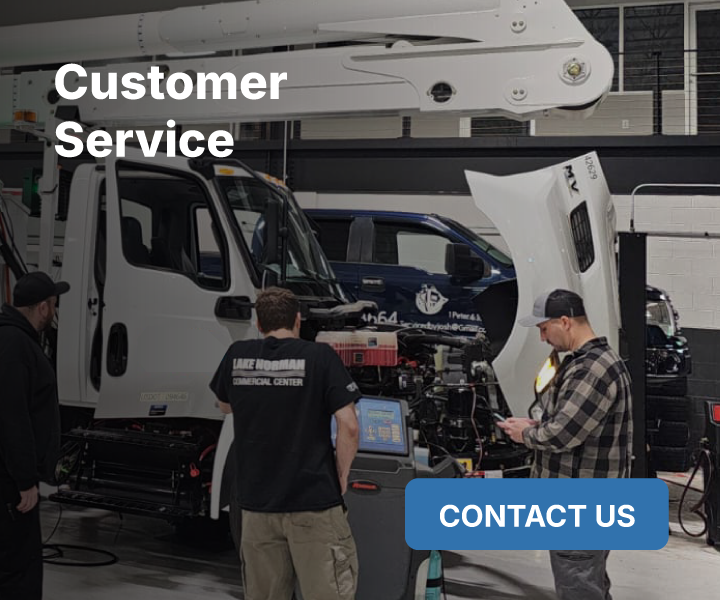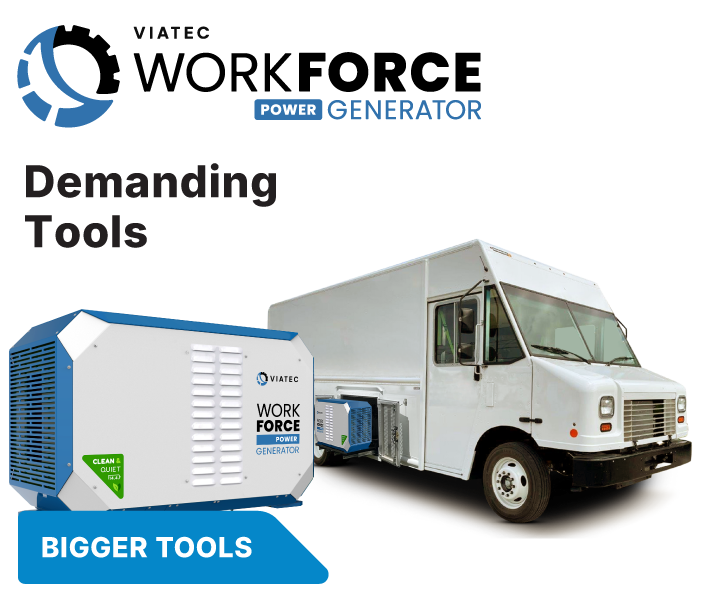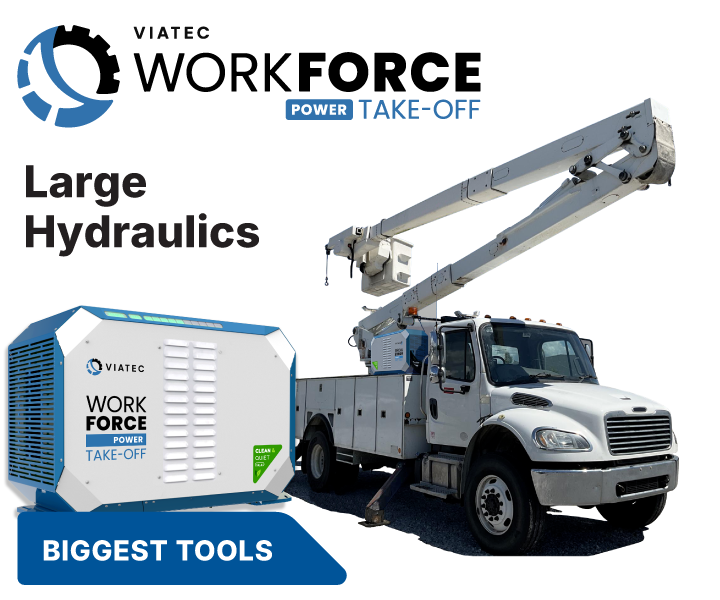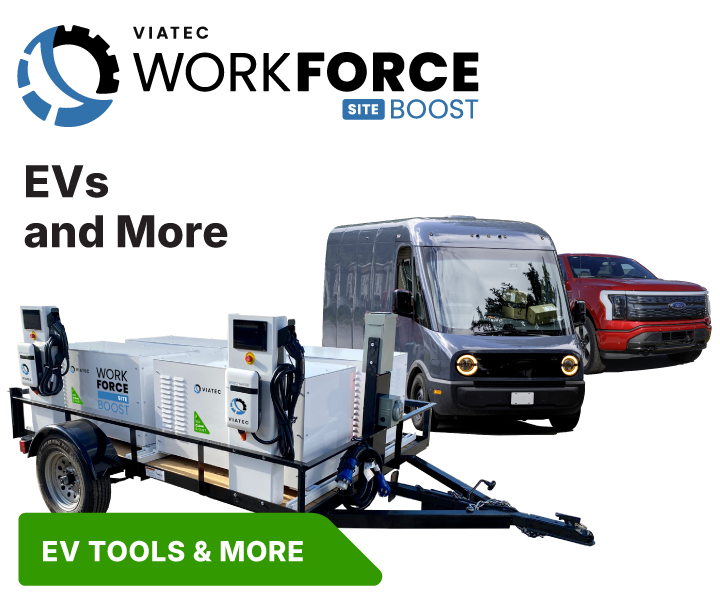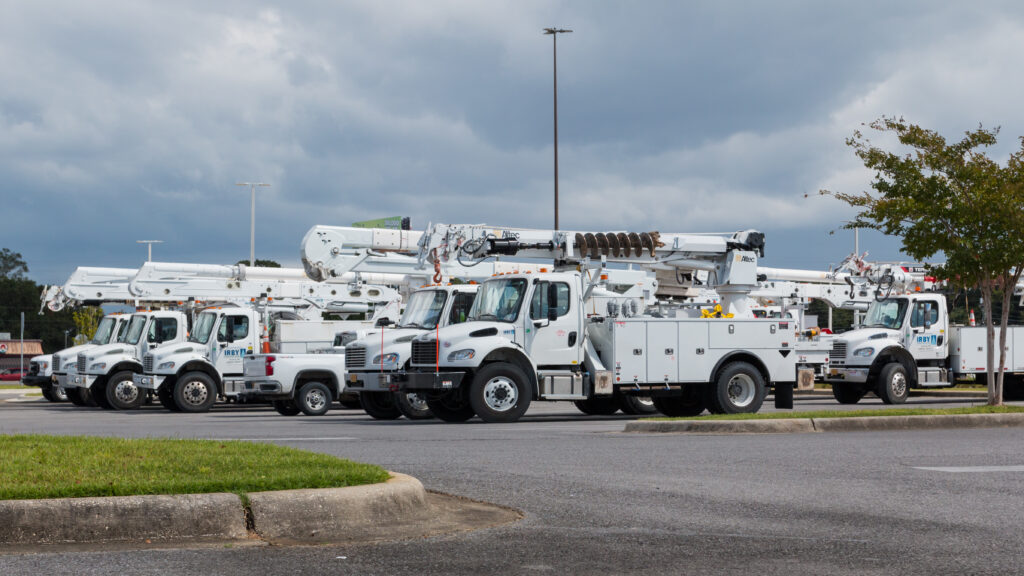
Enhance your fleet electrification planning with our equipment-plus strategy.
A simple fleet electrification planning framework for utilities
Managing a fleet of work trucks is a complex operation with a lot of moving parts, so it makes sense that transitioning the entire operation to electric power can feel daunting. You have to take all those moving parts and change what makes them move!
That’s part of why we believe equipment-plus is the best way to electrify your fleet. You can read the full details on the advantages of equipment-plus electrification in our blog post on the subject; the short version is that in many cases, electrifying work functions is faster, simpler, and more cost-effective than purchasing an entire fleet of EVs.
So fleet managers can understand whether equipment-plus makes sense for them, we developed a simple, three-step framework for fleet electrification. If you’re wondering whether equipment-plus could work for your fleet, read on.
1. Understand Why You Want to Electrify Your Fleet
It could be to reduce costs, reduce emissions, comply with legislation, access grants, meet your organization’s decarbonization targets, or any combination of the above. Whatever your aims may be, gaining clarity on your goals will make it easier to identify the most appropriate strategy for electrification.
2. Define the Criteria for Your Goals
To know whether your fleet electrification strategy is working, you need to be able to measure success. The following criteria are some examples we’ve seen used by leading utilities. You can pick from this list, or come up with your own.
- Timing – How quickly do you need to meet your electrification or decarbonization goals and targets? Are some more urgent than others?
- Feasibility – How hard will it be to meet your goals? Are there solutions available on the market right now? Are some more urgent than others?
- Cost – How expensive are these solutions? What is your budget?
- Other factors – Which other factors would influence your decision? Some examples include crew safety, reliability, redundancy, ability to service the vehicles in-house, and the capability to operate in a disaster recovery scenario.
3. ANalyze Your Fleet Vehicles
With your goals in place and your success criteria decided, it’s time to apply them to your fleet. Take stock of how many vehicles you have, the different types, and their specific work functions. It might be beneficial to break them down into three broad categories.
- Those that move while performing their role, for example, vans that carry equipment and personnel or plows that clear roads
- Those that mostly idle, such as bucket trucks or digger derricks
- Those that do both either in sequence or at the same time, such as earth movers.
If you have even a few that spend most of their time idle during work functions, it is likely worth exploring an equipment-plus electrification plan rather than pursuing a fully electric fleet.
Ready to electrify your fleet?
At this stage, you’ll know why you’re electrifying your fleet, understand how to judge success, and have a clear picture of the task ahead. The next steps will be much more specific to each fleet manager—figuring out which work functions or vehicles to prioritize, comparing various vendors, developing timelines, calculating budgets, and other tasks unique to your situation. Whatever comes next, you’ll be on your way to fielding a more sustainable fleet.
Want to see how much you could save with an equipment–plus approach? Use our free idling calculator to get a customized look at the numbers.



